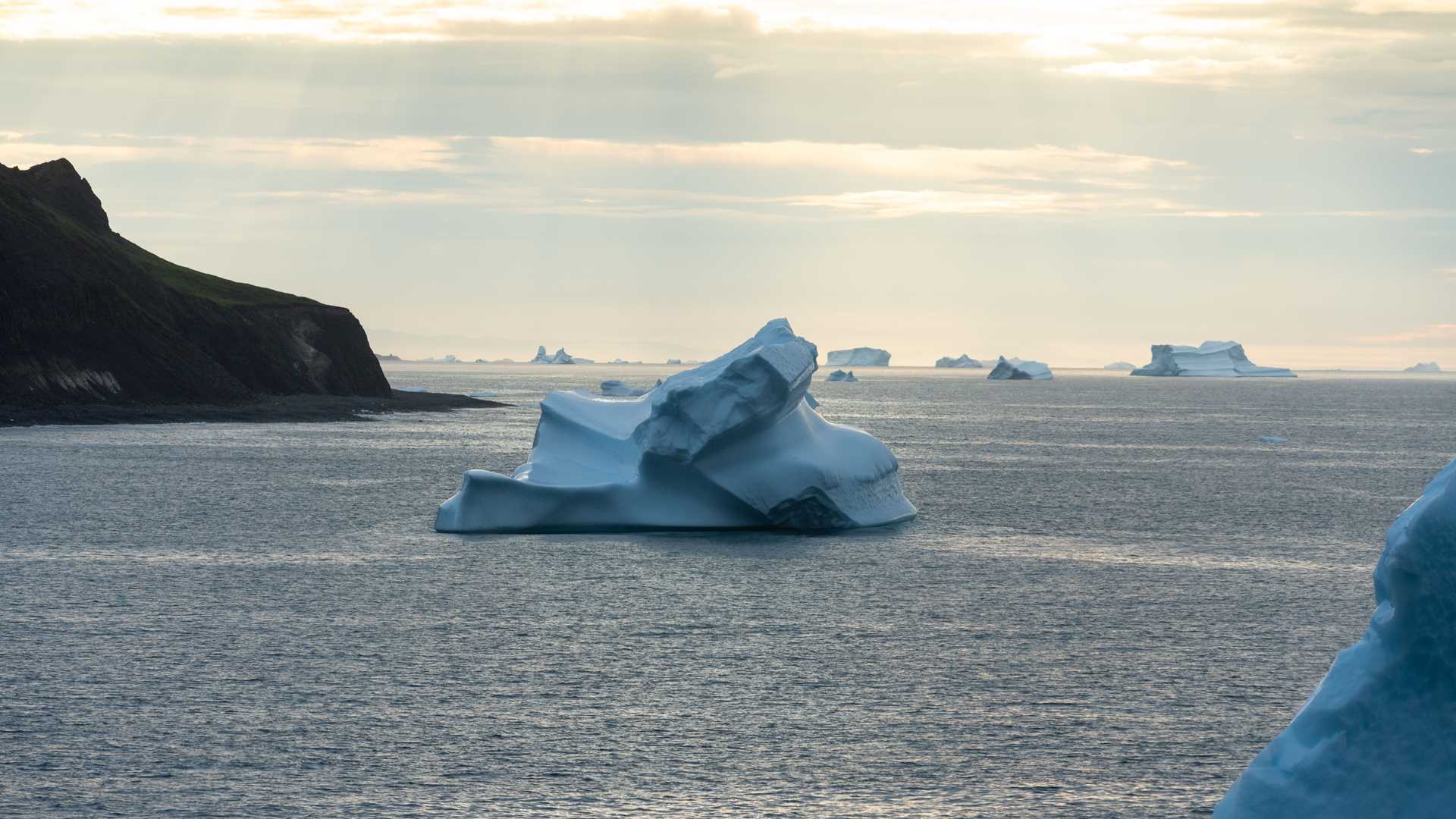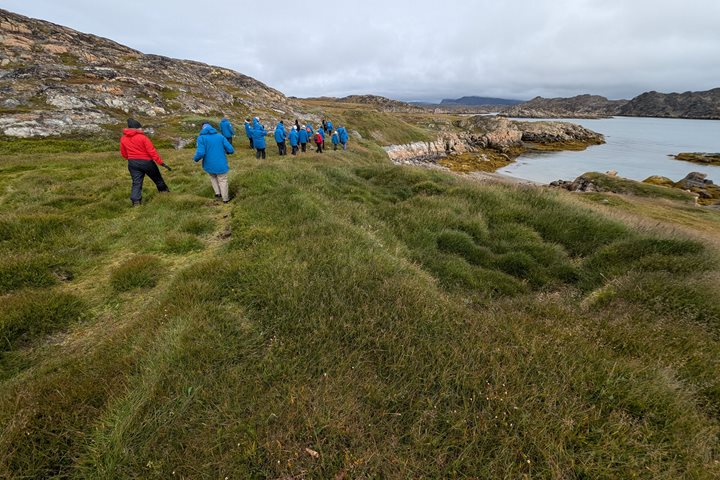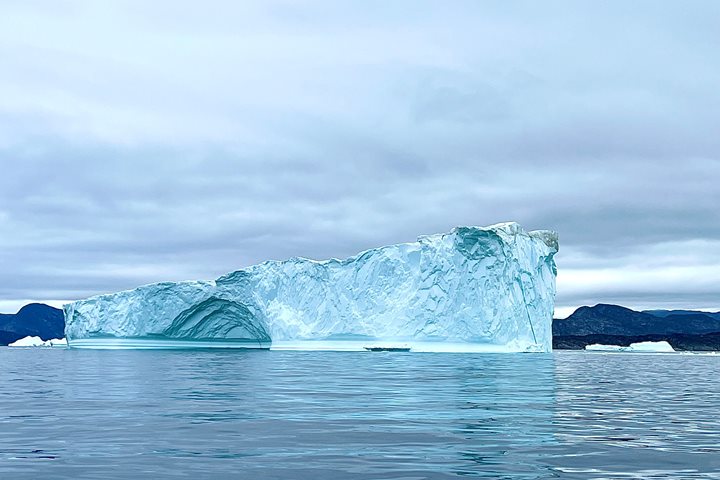On National Geographic Explorer this morning, we awoke underway on the final approach to a beautiful part of Disko Bay off the southeast coast of Disko Island. We haven’t traveled very far (less than 40 nautical miles) since last night’s wonderful sighting of humpback whales near Ilulissat. The area near shore was filled with huge icebergs and a decent swell, which made our landing a bit spicy. Our Zodiac drivers did a great job of safely transporting guests, crew, and staff to the shoreline to prepare for a wonderful morning.
As usual, we set out in different interest groups. The long, adventurous hikers went way up on a ridgeline, and guests enjoyed spectacular views over the shoreline. The moderate hikers walked up the valley towards a canyon. A leisurely walk focused mostly on the shoreline. The photo walkers barely made it off the landing but were somehow the last ones back to the landing site to return to the ship. The photo group found many amazing subjects to photograph, ranging from wide angle shots of the amazing landscape all the way down to the details of the fascinating plants on the tundra.
Disko Bay is known as Qeqertarsuup tunua in Greenlandic and Diskobugten in Danish. It has been an important location for centuries. Its coastline was first encountered by Europeans when Erik the Red started settlements in 985 CE on the more habitable western coast. These two settlements, called the Eastern and Western Settlements, were subsistence economies that survived on animal husbandry. Soon after the Western Settlement was established, Norsemen traveled up the coast during the summer thaw and discovered Disko Bay. Their special interest was due to the area’s rich sources of walrus ivory, seal pelts, and whales, all of which could be used in a variety of ways. These products became the main exports and income source for the Greenlandic settlers who traded with Iceland, the British Isles, and mainland Europe. Without these resources, the settlements may not have lasted as long as they did.
In the afternoon, the bridge team of National Geographic Explorer repositioned the ship to the Sullorsuaq Strait, where we lowered our fleet of Zodiacs to set out and explore the vast icebergs near the mouth of Torsukattak Fjord. It was an incredible way to end the day. Overall, today was a very memorable, enjoyable, and exciting day spent exploring Western Greenland.







